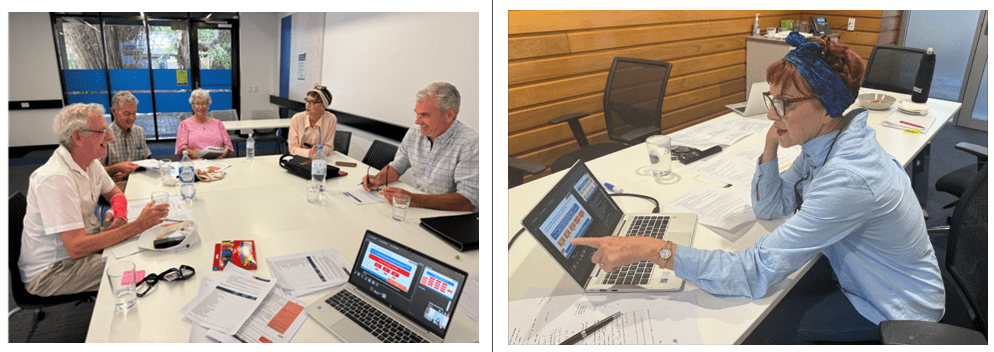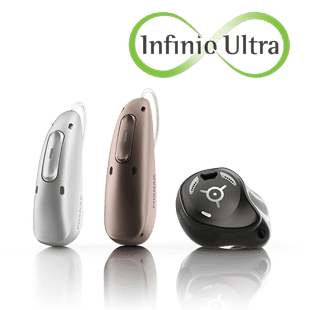
HearChoice: a new digital decision aid tool to educate, engage and empower adults with hearing loss
This evidence-based, co-designed app supports adults with hearing loss in exploring their options and making informed decisions. It offers step-by-step, unbiased guidance to help them choose care that aligns with their needs, values, and preferences.
Good hearing does not last forever. In an ideal world, when hearing difficulties are first noticed, people would have the:
- capability to recognize this, know what to do and where to go.
- opportunity to have access to high-quality information and support in decision-making.
- motivation to understand the importance of doing something about their hearing difficulties.
By tapping into these aspects of behavior change, encapsulated by the components of the Capability, Opportunity, Motivation – Behavior model (COM-B),1,2 and taking action to seek help and make decisions on hearing healthcare, it is likely that hearing outcomes would improve, faster.
However, in our far from ideal world it takes on average 9 years for people to do something about their hearing,3 and when they do, they are typically presented with only two options: hearing aids or doing nothing.
This often results in many people (~40%) leaving audiology clinic appointments empty-handed.4 The pervasive impact of their hearing difficulties continues, affecting communication, social engagement and wellbeing, leading to poorer health and quality of life.
Our HearChoice research has identified a comprehensive framework on the many barriers and facilitators to help-seeking and decision-making.5 One 62-year-old lady with hearing difficulties summarized some of the barriers that she, and many others, experience in their everyday lives when comes to hearing health.
“I feel a little bit clueless about going forward. And I think that’s a barrier that a lot of people feel in my position. Because you don’t have that information, you just, you just feel defeated.”
She went on to say:
“I just want basic information about what it might cost me. What I might be able to get from the government, what I might be able to do, those types of things.”
A co-designed tool for better decisions
The HearChoice decision aid tool is a co-designed, interactive, unbiased app that aims to help address these challenges in hearing healthcare. It addresses research priorities identified by national clinical guidelines in Australia and the UK on the need for clear information to help decision-making about hearing healthcare,4,6,7 is evidence-based and adheres to the International Patient Decision Aid Standards criteria indicating it is high-quality, trustworthy, usable and effective.8
HearChoice offers a broad range of 11 hearing health options, including hearing aids, and assistive listening devices, online tools, and rehabilitation support including communication strategies, well-being support and auditory-cognitive training.
What the users say
User-acceptance testing indicated HearChoice was highly usable, useful and impactful. Participants described it as:
“very clear and unbiased; easy to navigate; well-structured; great explanations, easy to understand. I’m impressed — everything you need is here!”
On the user version of the Mobile Application Rating Scale (uMARS), HearChoice scored an average score of 4.5 for information, aesthetics, functionality and engagement, and 4.8 for perceived impact (on a 1-5 scale, where 5 is strongly agree). All users said they would highly recommend HearChoice to others and gave a star rating of 4.5 out of 5.
Furthermore, there were indications of behavior change following HearChoice use, even though that was not the focus of the UX-testing:
- One 67-year-old lady said: “I wish I’d known this before I saw the audiologist,” and brought forward her decision to get hearing aids by six months.
- Another 69-year-old man said: “I didn’t know there were so many options,” and purchased a TV streamer a couple of days later.
This almost certainly reflects the iterative, user-centered, participatory, design-thinking approach that guided development of the app, which involved continuous input from our Consumer and Community Involvement (CCI) panel. One of our CCI panel sent an unsolicited email after testing an early minimal viable product and wrote:
“Gosh — HearChoice progress looks really good. As a consumer needing to make assistance choices, the tool felt like I had a personal coach assisting me to navigate the website.
Moreover, it breathed non-judgmental, no hard sell, no pontificating, no bias, with simple empathic language.”

What’s next?
In May, we launched an online registered randomized controlled trial to evaluate the tool (ACTRN12624001139561p). By using machine learning, we aim to understand the decision-making processes people take, as well as develop patient profiles to inform HearChoice 2.0.
Finally, research can only be impactful if it gets translated into clinical practice. As such, working with Curtin Innovation and Entrepreneurship and our HearTech Solutions startup, we are also looking at real-world impact in clinical practice and how it can be integrated into hearing care pathways.
Stay tuned to the Audiology Blog for updates on this work and how HearChoice may be used in clinics in the future.
Learn more: To learn about some of the barriers and facilitators to help-seeking and informed decision-making in hearing care, read our recent qualitative study published in the International Journal of Audiology: “I feel a little bit clueless”: perceived barriers and enablers to help-seeking and informed decision-making in hearing care
References:
- Michie, S., Johnston, M., West, R., Abraham, C., Hardeman, W., & Wood, C. (2014). Designing behavior change interventions: The behavior change wheel and behaviour change techniques. Annals of Behavioral Medicine, 47, S157–S157.
- Sawyer, C. S., Armitage, C. J., Munro, K. J., Singh, G., & Dawes, P. D. (2020). Biopsychosocial classification of hearing health seeking in adults aged over 50 years in England. Ear and Hearing, 41(5), 1215.
- Simpson, A. N., Matthews, L. J., Cassarly, C., & Dubno, J. R. (2019). Time from hearing aid candidacy to hearing aid adoption: A longitudinal cohort study. Ear and Hearing, 40(3), 468–476.
- Woods, M., & Burgess, Z. (2021). Report of the Independent Review of the Hearing Services Program.
- Bothe, E., Bennett, R. J., Sherman, K., Timmer, B. H., Myers, B., & Ferguson, M. A. (2025). “I feel a little bit clueless”: Perceived barriers and enablers to help-seeking and informed decision-making in hearing care: a qualitative study. International Journal of Audiology.
- Hearing Health Sector Committee. (2019). Roadmap for Hearing Health.
- NICE. (2018). Hearing loss in adults: assessment and management. National Institute for Health and Care Excellence. https://www.nice.org.uk/guidance/ng98
- Volk, R. J., Llewellyn-Thomas, H., Stacey, D., & Elwyn, G. (2013). Ten years of the International Patient Decision Aid Standards Collaboration: evolution of the core dimensions for assessing the quality of patient decision aids. BMC Medical Informatics and Decision Making, 13(Suppl 2), S1.
Acknowledgments:
This research is supported by an Australian National Health and Medical Research Council 2021 Hearing Health Evidence Based Support Service Grant (2015748). Many thanks to key members of the HearChoice team: Ellen Bothe, Barbra Timmer, Kerry Sherman, Kat Penno, Andrew Bellavia, Piers Dawes, Bec Bennett, David McMeekin, Jorge Mejia, Bronwyn Myers, and our CCI colleagues.
